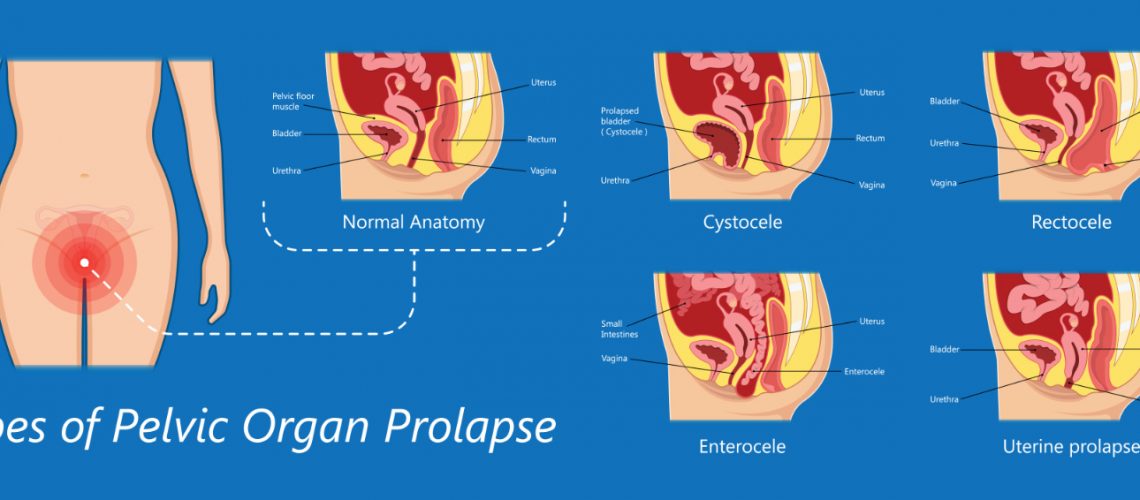Prolapse is the movement of pelvic organs from their normal anatomical position. It is estimated that 6% of women have a prolapse. The position of the pelvic organs depends upon the internal connective tissues and pelvic floor muscles to support. Imagine a boat moored in a canal; the bladder is the boat, the connective tissues are the ropes and the pelvic floor muscles are the water. If the ropes become loose the boat can move and it the water level drops the boat drops too!
What are the Symptoms of Pelvic Organ Prolapse?
- Heavy/dragging sensation.
- Bulging in the vagina.
- Feels like a tennis ball inside.
- Feeling something coming down.
- Tampons push out of position.
- “Felt something funny” when in the shower.
- “Worse after standing” bowel movement (poo).
- Lack of sensation during sex.
- May have incontinence or constipation.
What are the Causes of Prolapse?
- Damage to pelvic support system during pregnancy, labour and vaginal delivery.
- Hormonal changes during menopause.
- History of conditions of weak connective tissue; hernia, haemorrhoids, varicose veins.
- Family history of prolapse.
- Obesity.
- Smoking.
- Chronic (longstanding) constipation.
- Repeated heavy lifting or strenuous exercise.
There are 6 different Types of Prolapse
Vaginal Prolapse – Anterior wall is called a cystocele (front wall of vagina) and is caused by a prolapse of the bladder. Symptoms include feeling pressure down below, needing to wee frequently, not being able to hold when you need to go (urgency) or leakage (incontinence). Not being able to fully empty the bladder, dribble of wee after you finish, frequent UTIs.
Posterior wall is called a rectocele (back wall of the vagina) caused by the rectum (back passage) falling forward. Symptoms include difficulty with bowel movements (having a poo), feeling an urgent need to go and not being able to hold it, not being able to completely empty, soiling underwear, lack of sensation during sex.
Uterine prolapse (Uterus) is the most severe, it is called procidentia.
Vault Prolapse – occurs after a hysterectomy when the uterus is gone and wall of the vagina collapses.
Enterocele – the small intestine that sits behind the uterus falls down into the space between the back of the vagina and rectum (back passage).
Rectal Prolapse – the rectal tissue, in the back passage is protruding out from the anus (opening of the back passage).
What is the Treatment for Pelvic Organ Prolapse?
Physiotherapy to strengthen the pelvic floor and cores muscles, improve breathing patterns, lifting strategies, and general bad posture.
Surgery to tighten the connective tissue (the ropes) – important to strengthen the pelvic floor (if the water drops the boat will drop even if the ropes are tightened).


